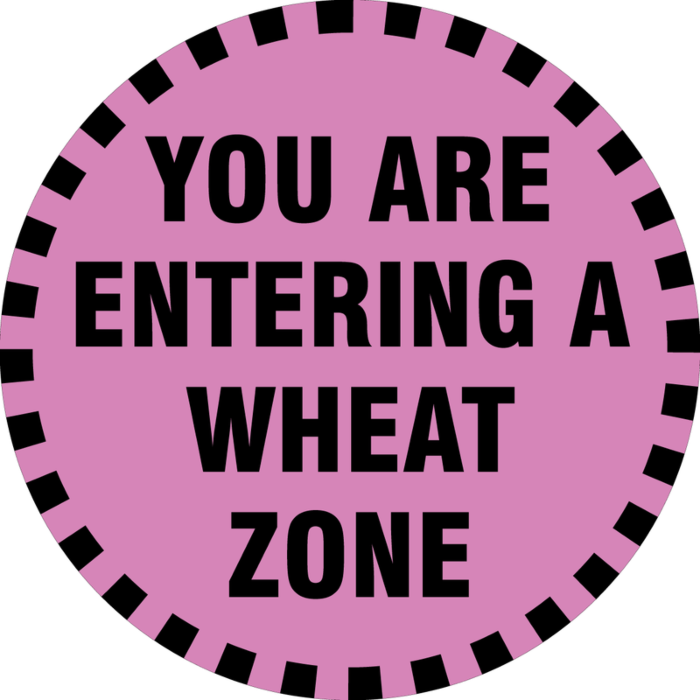Color-Coding By Allergen
Written by Adam Serfas

Food manufacturers and processes that work with common allergens should absolutely be using a color-coding plan in their facilities as they operate at a higher risk for serious contamination issues. This guide will detail the steps and best practices for creating a successful color-coding plan for allergens.
Start by identifying your allergens.
While there are over 160 known food ingredients that can cause allergic reactions for those with food allergies, the FDA has designated 8 common allergens that legally require special labeling in the US. These allergens—milk, eggs, fish, crustacean shellfish, tree nuts, peanuts, wheat and soybeans—account for 90% of food-related allergic reactions. Currently, the FDA is also considering adding sesame seeds to this list. The EU’s list is a bit longer with some slight variations to categories and additions including cereals containing gluten, sesame, a larger list of nuts, mustard, celery, lupins and sulfite. Voluntary global food safety standards, which are growing in popularity, also require deliberate allergen control.
Some facilities that handle these allergens will already be set up in such a way that the allergens are contained to specific areas or zones of the building. If that’s the case, it’s best to color-code by zone. You can learn more about that fairly straightforward approach here.
If your allergens are not handled in strict zones, separate from other materials, you’ll approach the plan slightly differently. In its most basic form, if a facility has one common allergen used, the plan would make use of one color to signify all tools that come into contact with the allergen and another color for those tools that do not. If a facility handled more than one allergen, you’d add additional colors. Then, depending on the needs of the facility, more colors could be added. Common examples include color designation for cleaning floors and drains, for restrooms, and to distinguish between raw and cooked meat. The plans will vary facility to facility, but it’s always a best practice to keep the plan as concise and straightforward as possible to better the chances of it being followed.
Use contrasting colors.
This second point is vital for any kind of color-coding plan but holds double meaning for manufacturers and processors who are color-coding by allergen. Once you identify the number of colors you need, you’ll then determine which tools should be color-coded. This step is important because you’ll need to ensure that the color you choose allows you to find each color-coded tool you need. Additionally, you’ll want to be sure that the colors in your palette are contrasting colors so that they are easily distinguishable at a quick glance for both normally-sighted employees and those who are color blind.
Additionally, you’ll want to consider selecting colors meant to be used with certain allergens that contrast with the allergen product itself. That way, you’re far more likely to notice a contrasting bristle or tool piece that might have found its way into the product. Oftentimes facilities might think it will be easier for employees to remember a color that resembles the allergen product itself, but that benefit does not outweigh the risk it presents.
Consider how tools will be stored.
Color-coded tool storage is always a best practice for every color-coding plan, but it’s especially pertinent to color-coding for allergens. Be sure you have color-coded wall racks or shadow boards for each color in your plan to further minimize the risk of cross-contamination.
Don’t Forget Wearables.
Food-safe, color-coded garments offer a great way to flag personnel who come into contact with allergens. Just as you would with your tools, you'll select garments that follow your color-coding plan. This adds another layer of protection against cross-contamination allowing your food-safe garments to pull double duty in usefulness. Once again, we suggest looking into which colors are available here before solidifying a color-coding plan.
Take your time while developing and implementing the plan.
Finally, it’s vital to really take your time when developing your facility’s color-coding plan. Consult with your tool supplier and employees at all levels in your facility first, consider doing a trial run of the tools, and provide clear signing and ample training time before rolling out your plan. Then, be sure to review the success of your plan and the state of your tools often.
Should you need any help getting a plan in place, evaluating a current plan or have any additional questions about color-coding for allergens, we encourage you to contact our team of experts.


